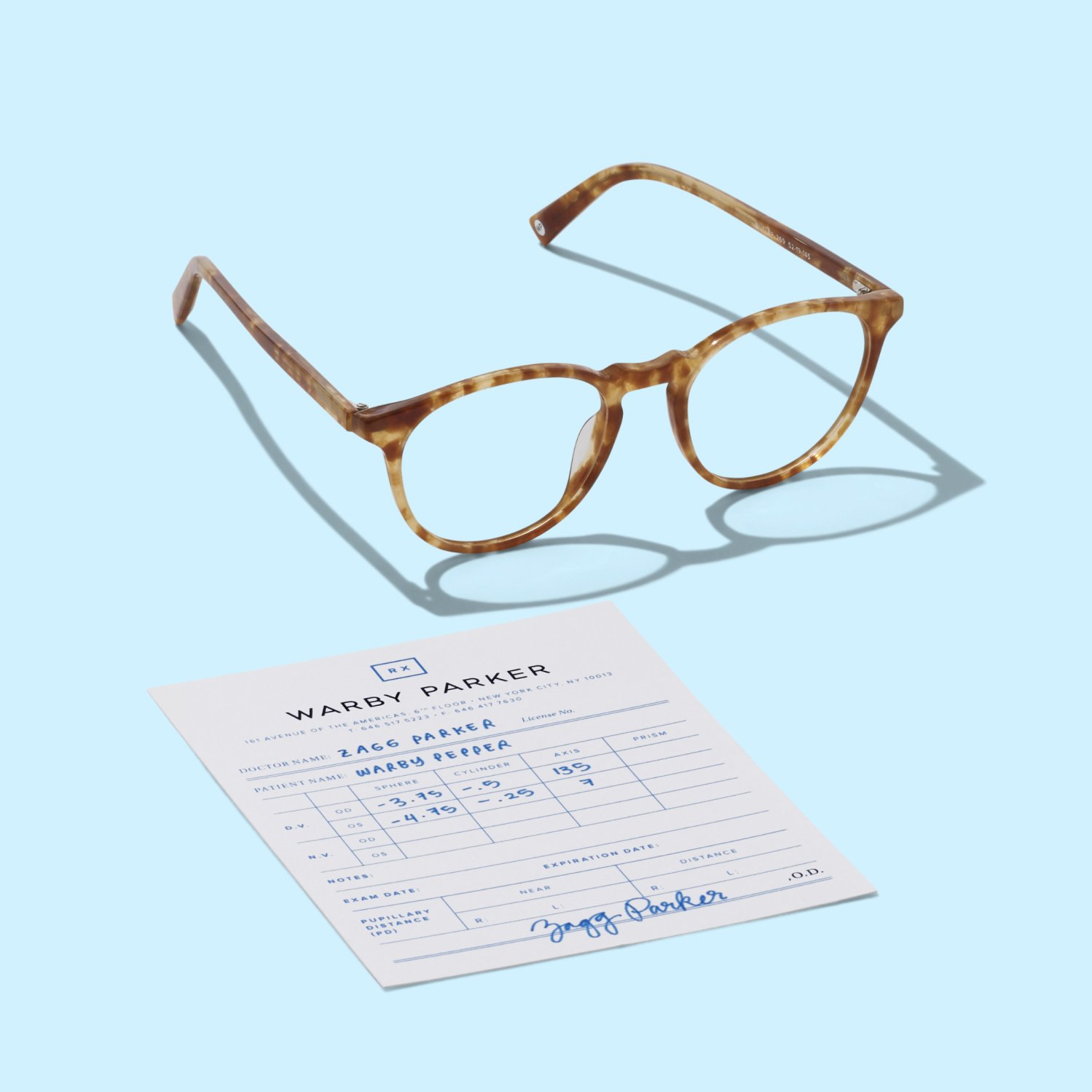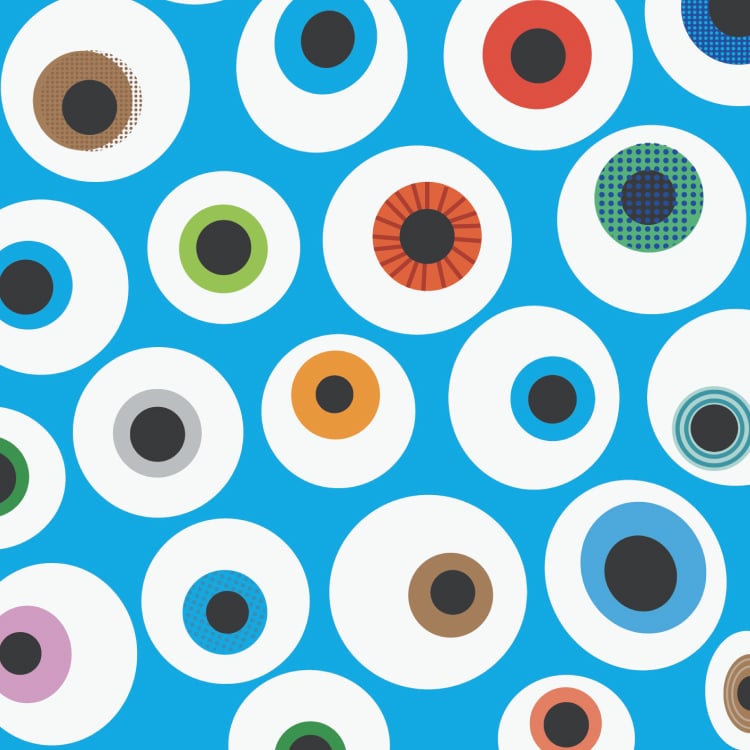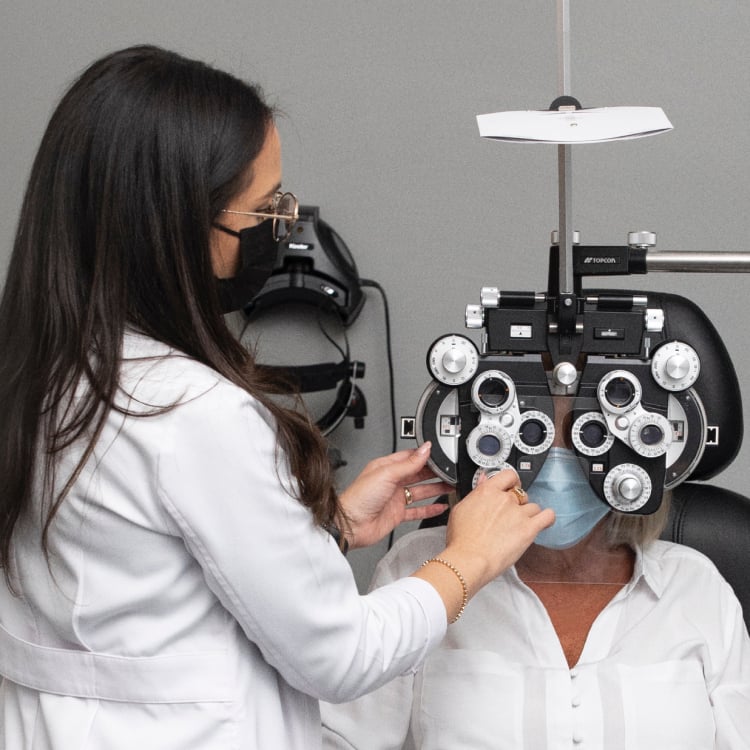Let’s say you’re driving down a road at night. As you concentrate on reaching your destination, you’re also aware of several light sources: oncoming headlights, traffic lights, streetlights, and reflective signs, to name a few.
For many drivers, these nighttime lights are helpful. But if you have uncorrected astigmatism, they might distract or even endanger you. They may look streaky, blurry, or haloed, and this effect can seriously impact your night driving skills.
Why does this happen? And how can you drive at night with astigmatism safely?
How Do People With Astigmatism See Lights?
Astigmatism can distort lights in several ways, and instead of a clear image, you might see:
- Streaky lights
- Haloed lights
- Blurry lights
- Lights surrounded by a starburst pattern
- Extremely bright glare
The images below depict how an eye without a refractive error would see lights, contrasted with how someone with astigmatism might see lights.
To understand how people with astigmatism see lights, we need to remind ourselves what astigmatism is and how it works.
Astigmatism refers to an irregular curvature of the eye’s cornea. Rather than looking like a smooth dome that’s been cut from a sphere, an astigmatic cornea might look like a football or an egg. (You can also have astigmatism in your eye’s lens, which is known as lenticular astigmatism.)
The shape of the cornea determines how light gets bent as it enters the eye. A cornea without astigmatism focuses light into a single point on the eye’s retina. Due to its uneven curvature, a cornea with astigmatism bends the light so that it has multiple focal points inside the eye instead of just one.
The result? Annoyingly blurry eyesight. Unlike nearsightedness and farsightedness, astigmatism typically affects both your near and distance vision, so it’s hard to escape the blur.
However, it’s important to note that astigmatism affects every eye differently. If you see lights like the distorted ones pictured above, it doesn’t necessarily mean that you have astigmatism—you might have a different kind of refractive error, or something else entirely. Schedule an eye exam to get your vision checked!
How Does Astigmatism Affect Night Vision?
At night, your pupils respond to the darkness by dilating to allow more light in. This wouldn’t typically be a problem, but for an eye with astigmatism, a dilated pupil means that light has an even bigger area to enter once it passes through the uneven cornea.
As more light gets scattered into multiple focal points inside the eye, the visual issues caused by astigmatism—blurry lights and all—become more noticeable. And when you’re night driving, that’s the last thing you want.
What Do People With Astigmatism See at Night?
At night, people with astigmatism can experience the same visual distortions as they might during the day. But because the contrast between light sources and the surrounding darkness is so stark, and because the pupil of the eye is taking in more light at one time, the distortions seem much more pronounced.
Back in 2019, a tweet went viral for sharing images of what night driving might look like to someone with astigmatism versus someone without it. Thousands of people shared the images—and many began to suspect that they had undiagnosed astigmatism.
Then, multiple journalists consulted eye doctors and attempted to share the truth: There’s no one image that can tell you what astigmatism looks like, or whether you have it. Only an optometrist or ophthalmologist can do that. The doctors pointed out that the image in the tweet could be explained by standard glare, or even dry eye.
The message we’re trying to get across here is: Don’t self-diagnose based on what you see or read online (yes, even here). See your eye doctor and get the treatment your eyes deserve.
Tips for Driving at Night With Astigmatism
Driving safely at night when you have astigmatism requires certain precautions. Consult the tips below, and remember: Never operate a vehicle if you think your vision will interfere with your ability to drive.
Tips That Help Your Eyes
The best way to address the blurry lights caused by astigmatism is…to treat your astigmatism. Fortunately, there are many ways to do just that.
Wear prescription eyeglasses: After an optometrist determines your eye prescription, you can shop for glasses that will correct your astigmatism. Make sure to look for lenses that have an anti-reflective coating. (Not to brag, but all of our lenses do.) Together with your prescription, they should reduce the streaky, blurry effects around lights at night.
Note: We advise against purchasing glasses with yellow, tinted lenses marketed for night driving. These glasses have been studied and do not seem to make night driving any safer—in fact, they may make it harder to see.
Wear toric contact lenses: Designed specifically for eyes with astigmatism, toric contact lenses are a popular alternative to glasses. Research shows that wearing this type of contact lens can add a significant boost to your tactical driving skills if you have astigmatism. If you’re curious about toric lenses, talk to your eye doctor to see if you’re a good candidate for them.
Consider surgery or other treatments: Some people treat their astigmatism with surgery such as LASIK or with ongoing treatments like orthokeratology—contact lenses worn overnight that gradually reshape your cornea. These methods can be costly, however, and not everyone is eligible for them. Additionally, some people can still experience distortions such as halos and glare following refractive surgery.
Stock up on eye drops: If your eyes are prone to dryness, you might also consider keeping a bottle of rewetting eye drops handy. (Contact lens-wearers should only purchase eye drops that are approved for use with contacts.)
Clean your glasses regularly: Smudged or streaky glasses can dramatically reduce your visual acuity. If you’re going to drive while wearing glasses, always have a microfiber cloth (and maybe some lens spray) nearby to keep your lenses clean and clear.
Tips That Help Your Driving
In addition to correcting your astigmatism, you can make small changes to your driving habits that help your night vision.
Clean your windshield, mirrors, windows, and headlights: Just like your glasses lenses, these parts of your car can become smudged or foggy, adding to the visual problems caused by blurry lights. Cleaning them regularly will ensure a clearer view (and your car will thank you).
Adjust your rearview mirror to use the night setting: Consult your car’s manual to learn how to engage this setting on your rearview mirror, which helps to cut the glare from other car’s headlights.
Turn down the brightness of your car’s displays: See if you can make the dashboard displays a little dimmer and less distracting.
Practice safe night-driving techniques: Astigmatism or no astigmatism, everyone should drive with extra caution at night. Don’t stare directly into the oncoming headlights of other vehicles, make sure you’re not drowsy or distracted, and stay aware of your surroundings. Allot some extra time for trips that might be quicker and easier during the day.
Treat Your Astigmatism and Banish Blurry Lights
Driving at night with astigmatism can be irritating and, frankly, frightening. What’s more, it can put the driver and other people on the road at risk.
But having astigmatism doesn’t mean you can’t drive at night—you just need to get the right vision correction and make sure you’re driving carefully. And hey, we’ll even help with that first part.








